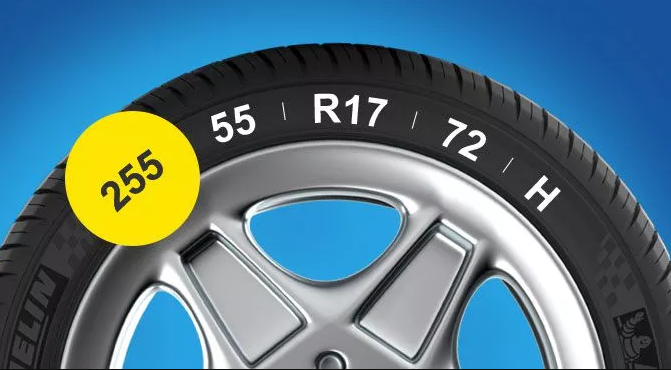As we already know how important a tyre is for a vehicle. They not only allow the vehicle to move but also are responsible for the stability and handling of the vehicle. Now the tyres are not cheap so you need to be very careful when buying. The most important variable while purchasing is the size of the tyre different from model to model of the car. If your tyre is not the correct fit for the vehicle it will impact the performance as well as your car.
You can find the correct size of the tyre for your vehicle on the car manual. The manufacturer mentions the size of the tyre appropriate for your vehicle according to the vehicle model to avoid any confusion. Despite knowing the correct size of tyres people choose to purchase different sizes of tyres for a more robust look without knowing the repercussion of that. The tyre carries the entire load of the vehicle which is also mentioned in the size of the tyre. Reading the size of the tyre will allow you to know your tyre better and which tyre is best for you. Let us discuss Bridgestone Tyres Reading below.
The sequence of the tyre has the following specifications:
APPLICATION:
The application of the tyre means which car is most compatible with the said tyre. For example, P marking means the tyre is compatible with passenger cars.
WIDTH:
The width of the tyre is the measure of the tyre from sidewall to sidewall which is measurable in millimetres. The wide-width tyre helps in off-roading in hilly areas, grasslands, deserts etc. Whereas narrow-width tyres are more suitable for city streets. The width of the tyre helps with the performance of the vehicle and also impacts the fuel efficiency.
ASPECT RATIO:
The ratio of width and the height of the tyre is its aspect ratio. The height here is in respect to the percentage of the width. For instance, if the aspect ratio of a tyre is 65. It will mean that the height of your tyre is 65% of the width of the tyre.
CONSTRUCTION:
The rimmed case of tyres has a different construction. The most common construction is radial construction(R). Other constructions that are also common are bias-ply construction(B) and diagonal construction(D).
DIAMETER:
The diameter is the diameter of the rim or the height of the rim which is measurable in inches.
LOAD INDEX:
The load index tells you the maximum weight that your tyre can bear and still perform optimally. If you put any extra weight than the said load index, it can compromise the sustainability of your tyres. If your tyre has a load index of 75, it means your tyre can carry up to 750kgs.
SPEED RATING:
The speed rating is self-explanatory, it means the maximum speed at which your tyre can perform and sustain. Although the speed rating cannot be accurate but is the average of the speed at which it is safe to drive your vehicle. It is always good to drive carefully and speed limit even when your speed rating is more, as it is safer and according to driving norms. The speed ratings are in form of alphabetical marking such as H for speed rating of 210km/h, Y for speed rating of 300km/h, etc.
Above are the main sequence or size codes of your tyre. Besides that, there are a few more specifications which allow you to know more about your tyres, such as:
SSR:
The SSR marking on the sidewalls of the tyre means the tyre is a self-supporting run-flat tyre. This means your tyre has reinforced walls that offer support in case of a puncture. This also means you will not lose control of your tyre and can drive to a safer place or a nearby auto repair shop.
M+S:
The M+S marking is common in winter tyres. This marking stands for mud and snow which means these tyres will offer you optimal performance on snowy or muddy roads.
DOT:
The DOT marking is the stamp of approval from the department of transportation.
DIRECTIONAL ARROWS:
The directional arrows come in handy while mounting treads. They provide you with information about the direction in which the tread should be mounting. This is very crucial in the case of directional tyres.
MANUFACTURING WEEK AND YEAR:
The manufacturers also mention the year of manufacturing so that you can buy a younger tyre rather than an old one. It is best if you purchase a tyre which is younger than 6 months. For instance, 66/20 means your manufacturing of tyre is of 66 weeks of the year 2020.
CONCLUSION
Our priority is to provide you with tyres that are safe and satisfies your requirements and driving habits. That is why we help you in Cheap Tyres Reading so that you can purchase a tyre that will offer you the best performance and safety during your trip.

